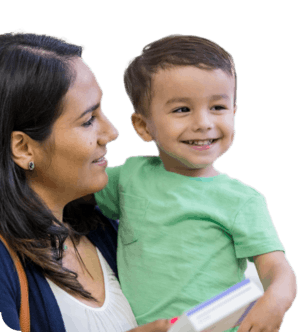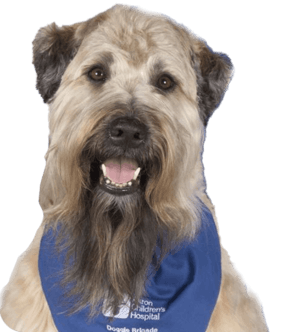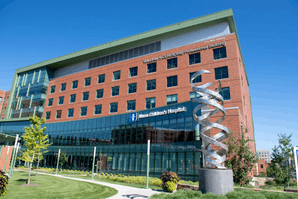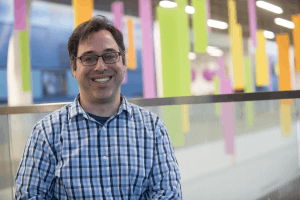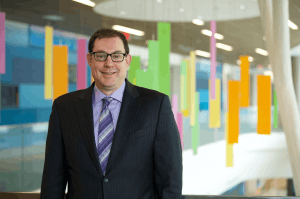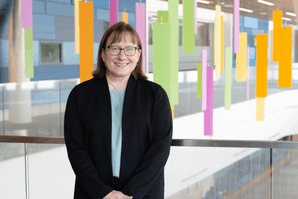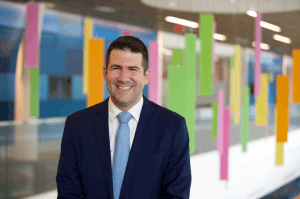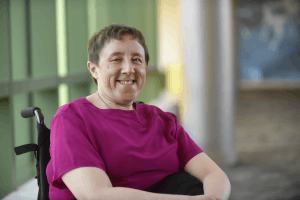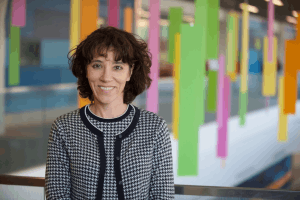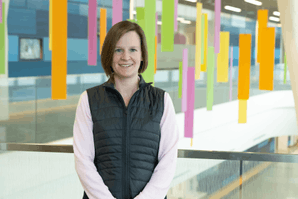Pediatric Spasticity Clinic
Back to NeuroDevelopmental Science Center
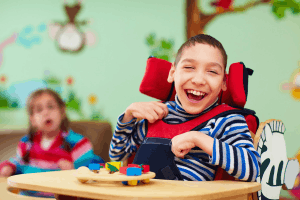
The Spasticity Clinic is a place where kids with serious muscle stiffness can get care from different medical experts in one place. Spasticity means muscles are stiff and hard to move. It can happen after a stroke, brain or spinal cord injury, lack of oxygen to the brain and some metabolic disorders. It is also a common sign of cerebral palsy.
Our Spasticity Clinic team includes doctors, psychologists, nurses and therapists. We work together to create a care plan for each child that may include treatments such as medicine, braces, therapy or surgery.
Department: 330-543-8050
Spasticity Clinic
Akron Children's Spasticity ClinicConsidine Professional Building
215 W. Bowery St.
Level 4
Akron, Ohio 44308
Fax: 330-543-8054
Map & directions
More about this location...
Department: 330-543-8050
Micah Baird, MD
Director, Division of Pediatric Physiatry; Medical Director, Rehabilitation; Pediatric Physiatrist
Sheryl Handler-Matasar, MD
Pediatric Orthopedic Surgeon; Director, Orthopedic Surgery & Clubfoot Clinic, Mahoning Valley
- For parents: Caring for Your Child With Cerebral Palsy (CP): Age 6â12
- For parents: Caring for Your Teen With Cerebral Palsy (CP): Age 13 and Up
- For parents: Caring for Your Child With Cerebral Palsy (CP): Birth to Age 5
- For parents: Cerebral Palsy (CP)
- For parents: Cuidar de su hijo adolescente con parålisis cerebral: A partir de los 13 años
- For parents: Cuidar de su hijo con parålisis cerebral: 6 a 12 años de edad
- For parents: Cuidar de su hijo con parålisis cerebral (PS): Nacimiento a los 5 años
Selective Dorsal Rhizotomy FAQ Website What is a selective dorsal rhizotomy? This surgery helps make the muscles in your childâs legs less tight. The tightness is called âspasticity.â
What happens during selective dorsal rhizotomy surgery?
A neurosurgeon makes a small cut in your childâs lower back. Nerves are tested, and the ones causing the tightness (âspasticityâ) are cut. This helps reduce the tightness for good. Then, the surgeon closes your childâs back with stitches.
How can selective dorsal rhizotomy help my child? This surgery can help by:
- Making muscles less tight and painful.
- Helping your child walk better.
- Improving movement and making daily tasks like getting dressed and bathing easier.
- Possibly lowering the need for surgeries in the hips and legs.
Who can get selective dorsal rhizotomy surgery?
Not all kids with cerebral palsy should have this surgery. A team of experts at the spasticity clinic, including doctors, surgeons and therapists, will decide if surgery is the right option.
What happens before selective dorsal rhizotomy surgery? Your child will need:
- A visit to talk about the surgery and pick a date, if needed. It must be at least 3 months after their last BotoxĂÂź or nerve block procedure.
- A visit with the presurgery team.
- Blood tests.
- A magnetic resonance imaging (MRI) scan.
- A plan to slowly stop some muscle medicine if your child is taking any.
- A plan to start a medicine called âgabapentinâ about a week before surgery.
What happens after selective dorsal rhizotomy surgery?
Your child might seem weaker at first because they no longer have the tightness that helped them move. Therapy will help them learn to move in a better way and includes:
Inpatient rehab
About 3-4 days after surgery, your child will start rehab. They will see physical and occupational therapists twice a day. If they saw a speech therapist before, they may see one in the hospital. A psychologist may also help your child adjust to changes since surgery. This hospital stay usually lasts 2-4 weeks.
Day rehab
After going home, your child will go to day rehab in Akron. Theyâll see therapists twice a day, five days a week - similar to a school day. If you live far away, you can stay at the Ronald McDonald House. This part of rehab usually lasts 4-8 weeks. During both rehab times, most kids miss school. A teacher at the hospital will help your child keep up with schoolwork.
Daily outpatient therapy
After day rehab, your child will have physical -and maybe occupational -therapy every day for about 4 weeks.
Ongoing outpatient therapy
After that, your child will keep going to therapy 2-4 times a week. This might go on for 1-2 years to keep building strength and skills.
What is an intrathecal baclofen (ITB) pump?
Itâs a small device that goes under the skin of your childâs belly. The pump puts medicine called âbaclofenâ into the fluid around your childâs spinal cord, which relaxes tight muscles (called âspasticityâ). Your childâs doctor will program the pump to give the right amount of medicine.
What is intrathecal baclofen?
This is a medicine that helps muscles relax. It is used when tight muscles are caused by problems in the brain or spinal cord - and puts the medicine into the fluid around the spinal cord.
What are the common side effects of baclofen?
Some children may feel sleepy, dizzy or sick to their stomach. Other possible side effects include low blood pressure, headaches, weak muscles or seizures. Like other medicines, getting too much or stopping it too quickly can be harmful.
Why use an intrathecal baclofen (ITB) pump?
- Your child wonât need as much medicine. When baclofen is taken by mouth, itâs a higher dose that may cause more side effects. The pump puts medicine straight into the fluid around the spinal cord, so a lower dose is needed that may result in fewer side effects.
- The ITB pump is adjustable. The doctor sets the pump to give the right dose for your child and can change it as needed.
- The pump provides long-term help. It wonât cure the tightness or the medical condition that causes it, but it can provide long-term management to help your child move better.
- Itâs reversible: If needed, the pump can be turned off or taken out.
Surgery helps many children. We may talk about these options for your child:
- Baclofen pump – a device placed under the skin that sends medicine to the spine to help relax tight muscles.
- Selective dorsal rhizotomy – surgery where a doctor cuts certain nerves in the spine to help reduce muscle tightness.
- Orthopedic surgery – there are various orthopedic surgeries that can help your child move better.
If the care team thinks your child should come to the Spasticity Clinic, our nurse coordinator will schedule two appointments:
1. Evaluation
- A psychologist will see if your child feels ready and willing to take part in therapy.
- Physical and occupational therapists will see how your child moves and take videos to show the Spasticity Clinic team.
2. Spasticity Clinic visit
- The team will look at the videos before your visit.
- During the visit, you’ll meet with different doctors and specialists to talk about your child’s condition and possible treatments.
Conditions and Treatments:
Cerebral palsy, spinal cord injury, movement disorder, traumatic brain injury







